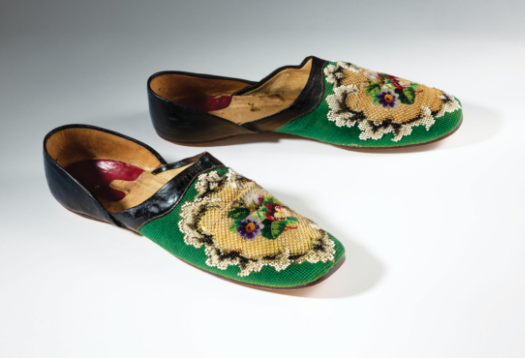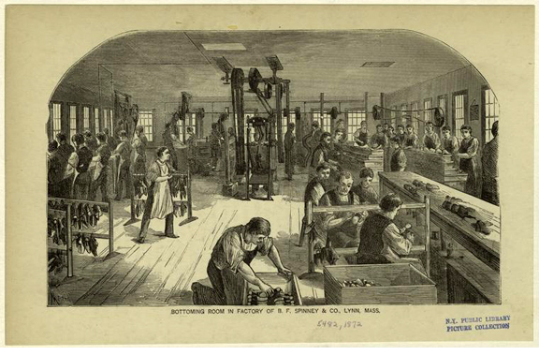The Gift of Comfort
English slippers, 1860s
Berlin was the dye centre of Europe in the mid-1800s and yarns in highly saturated bright hues stimulated a craze among upper-class women to do “Berlin work.” Some of the most popular items to needlepoint were slippers, which were made as gifts for men in the lives of these women.


This enthusiasm for making Berlin work slippers developed as industrialization was transforming shoemaking from a craft done entirely by hand to one involving factory production.
Pictured, the bottoming room of the B. F. Spinney & Co. factory in Lynn, Massachusetts, 1872.
B. F. Spinney & Co (Life time: NA) – Original publication: Lynn, Massachusetts. Immediate source.
“We sew, sew, prick our fingers, dull our sight, producing what? A pair of slippers, sir.”
– Elizabeth Barrett Browning, Aurora Leaigh, 1857
The growing interest in both worsted wool work and the “gentle craft” of shoemaking in mid-century was a harbinger of the Arts and Crafts movement, which developed in reaction to industrialization’s displacement of much traditional handiwork. This was especially important issue for women, because needlework had long been a measure of virtuous femininity.

